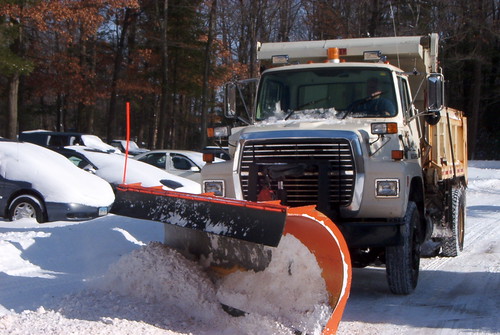This massive armored vehicle has a giant plow for clearing Russian mines
Plow #Plow

At the DSEI international arms show held in London earlier this month, German defense company FFG showed off a tank-like vehicle it had already sent to Ukraine. The Mine Clearing Tank, or MCT, is a tracked and armored vehicle, based on the WISENT 1 armored platform, designed specifically to clear minefields and protect the vehicle’s crew while doing so. As Russia’s February 2022 invasion of Ukraine continues well into its second year, vehicles like this one show both what the present need there is, and what tools may ultimately be required for Ukraine to reclaim Russian-occupied territory.
The current shape of the war in Ukraine is largely determined by minefields, trenches, and artillery. Russia holds long defensive lines, where mines guard the approaches to trenches, and trenches protect soldiers as they shoot at people and vehicles. Artillery, in turn, allows Russian forces to strike at Ukrainian forces from behind these defensive lines, making both assault and getting ready for assault difficult. This style of fortification is hardly unique; it’s been a feature of modern trench warfare since at least World War I.
Getting through defensive positions is a hard task. On September 20, the German Ministry of Defense posted a list of the equipment it has so far sent to Ukraine. The section on “Military Engineering Capabilities” covers an extensive range of tools designed to clear minefields. It includes eight mine-clearing tanks of the WISENT 1 variety, 11 mine plows that can go on Ukraine’s Soviet-pattern T-72 tanks, three remote-controlled mine-clearing robots, 12 Ahlmann backhoe loaders designed for mine clearing, and the material needed for explosive ordnance disposal.
The MCT WISENT 1 weighs 44.5 tons, a weight that includes its heavy armor, crew protection features, and the powerful engines it needs to lift and move the vehicle’s mine-clearing plow. The plow itself weighs 3.5 tons, and is wider than the vehicle itself.
“During the clearing operation, the mines are lifted out of the ground and diverted via the mine clearing shield to both sides of the lane, where they are later neutralized by EOD forces. If mines explode, ‘only’ the mine clearance equipment will be damaged. If mines slip through and detonate under the vehicle, the crew is protected from serious injuries,” reports Gerhard Heiming for European Security & Technology.
One of the protections for crew are anti-mine seats, designed to divert the energy from blasts away from the occupants. The role of a mine-clearing vehicle is, after all, to drive a path through a minefield, dislodging explosives explicitly placed to prevent this from happening. As the MCT WISENT 1 clears a path, it can also mark the lane it has cleared.
Mines as a weapon are designed to make passage difficult, but not impossible. What makes mines so effective is that many of the techniques to clear them, and do so thoroughly, are slow, tedious, time-consuming tasks, often undertaken by soldiers with hand tools.
“The dragon’s teeth of this war are land mines, sometimes rated the most devilish defense weapons man ever devised,” opens How Axis Land Mines Work, a story from the April 1944 issue of Popular Science. “Cheap to make, light to transport, and easy to install, it is as hard to find as a sniper, as dangerous to disarm as a commando. To cope with it, the Army Engineers have developed a corps of specialists who have one of the most nerve-wracking assignments in the book.”
The story goes on to to detail anti-tank and anti-personnel mines, which are the two categories broadly in use today. With different explosive payloads and pressure triggers, the work of min-clearing is about ensuring all the mines are swept aside, so dismounted soldiers and troops in trucks alike can have safe passage through a cleared route.
The MCT WISENT 1 builds upon lessons and technologies for mine-clearing first developed and used at scale in World War II. Even before the 2022 invasion by Russia, Ukraine had a massive mine-clearing operation, working on disposing of explosives left from World War II through to the 2014-2022 Donbass war. The peacetime work of mine clearing can be thorough and slow.
For an army on the move, and looking to break through enemy lines and attack the less-well-defended points beyond the front, the ability of an armored mine-sweeper to clear a lane can be enough to shift the tide of battle, and with it perhaps a stalled front.